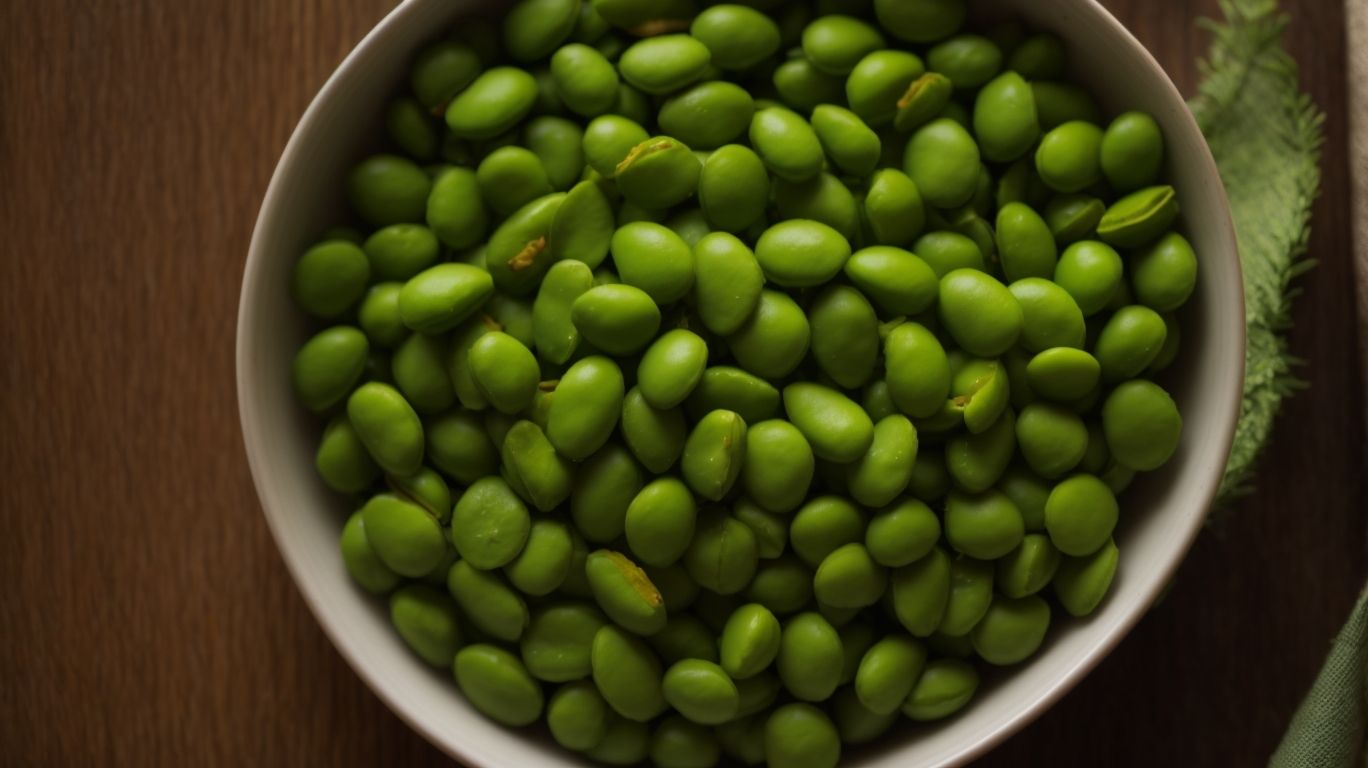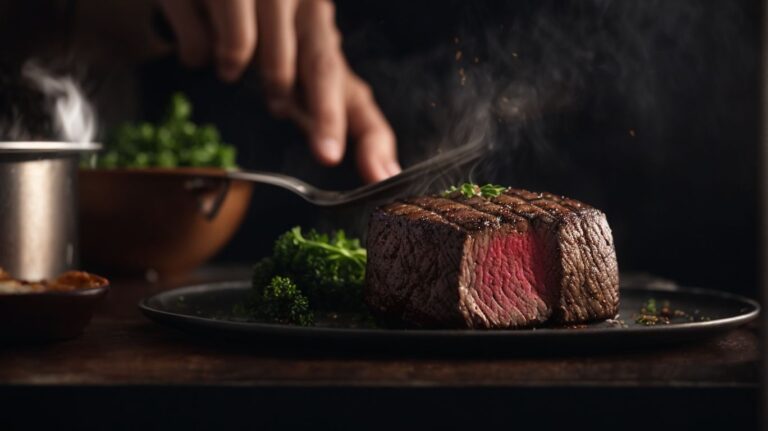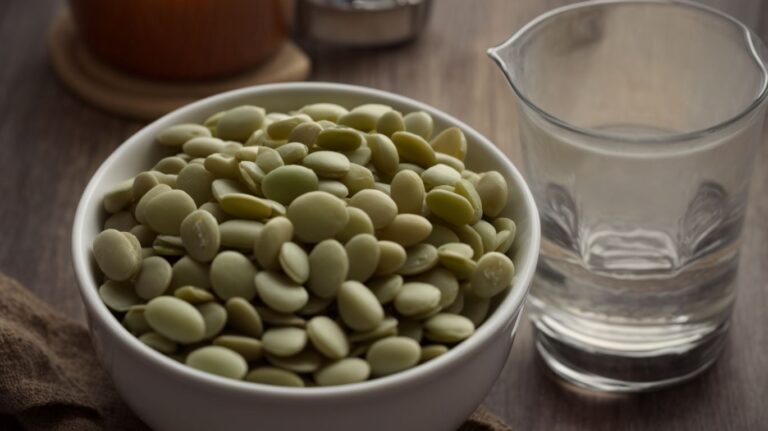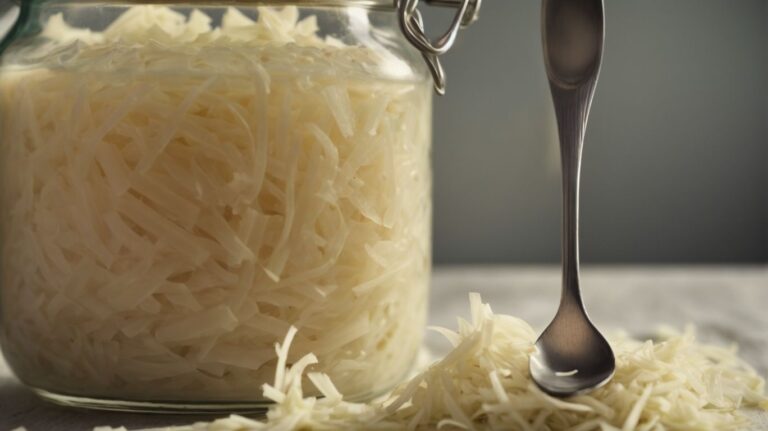How to Cook Edamame Without Shell?
Are you curious about how to cook edamame without the shell? Look no further!
We will explore what exactly edamame is and why you should try cooking it without the shell.
We’ll also discuss different methods of preparing edamame, such as boiling, steaming, microwaving, and roasting.
Plus, we’ll share some delicious flavoring options to enhance the taste of your cooked edamame.
Stay tuned for tips on storing cooked edamame and recipe ideas that will surely impress your taste buds. Let’s get cooking!
Key Takeaways:
What Is Edamame?
Edamame, also known as soybeans, is a popular and nutritious legume that is a staple in many Asian cuisines. These young soybeans are harvested before they fully ripen, giving them a vibrant green color and a unique flavor profile.
Originally from East Asia, edamame has been cultivated for thousands of years, with its origins tracing back to ancient China and Japan. Rich in protein, fiber, and essential nutrients, edamame is a favorite among those following plant-based, vegetarian, and vegan diets.
This versatile legume can be enjoyed steamed, boiled, or roasted, and is often served as a healthy snack, in salads, stir-fries, soups, or even incorporated into sushi rolls. Its growing popularity in Western countries is attributed to its health benefits and delicious taste.
Why Should You Cook Edamame Without Shell?
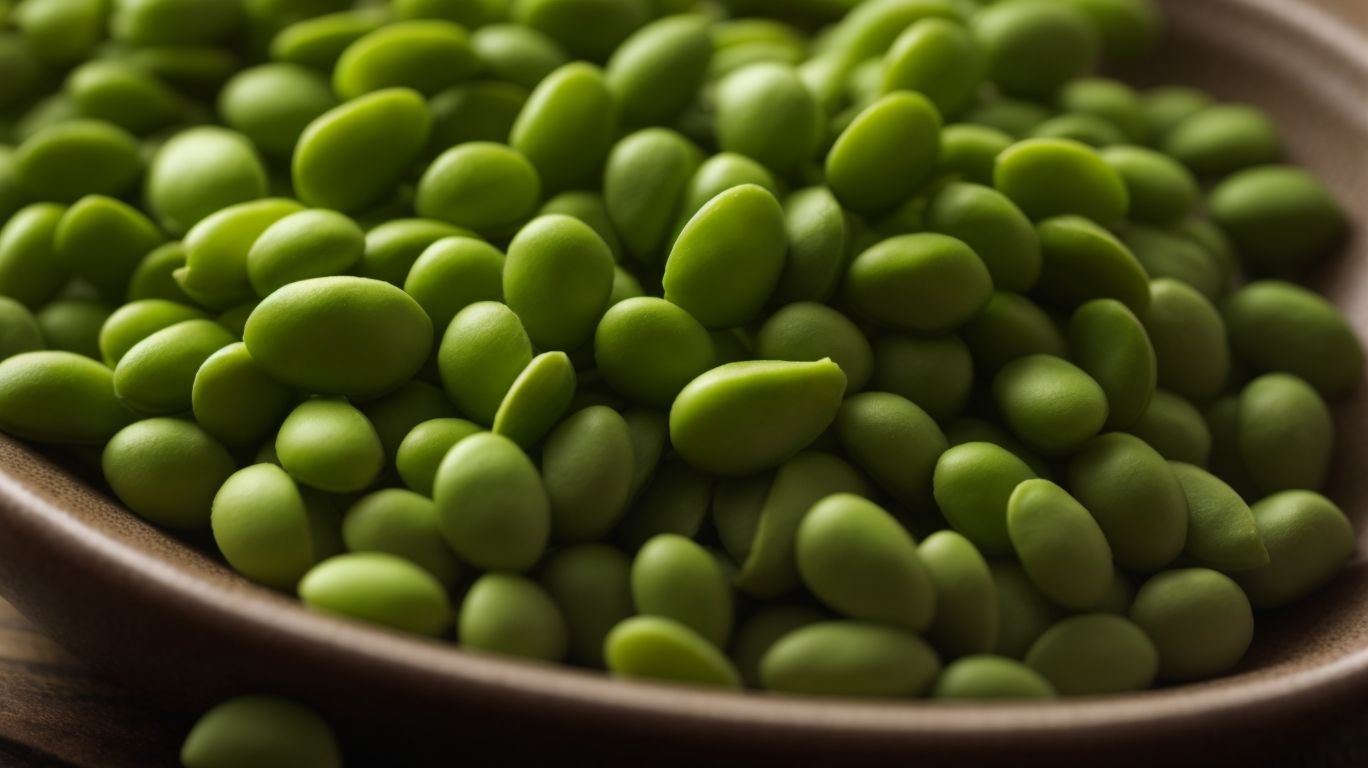
Credits: Poormet.Com – Zachary Johnson
Cooking edamame without the shell offers convenience and enhances the eating experience by allowing easy access to the tender soybeans inside. Removing the pods before cooking helps in absorbing flavors and seasonings more effectively.
Shelling edamame before preparing them not only cuts down on the hassle during dining but also allows for a seamless incorporation of flavor profiles. This method opens up the opportunity for the soybeans to soak in spices and sauces, leading to a more vibrant and savoury taste with every bite. The simplicity of enjoying a plate of seasoned edamame without having to deal with the tough outer covering makes it an appealing choice for those looking for a quick, yet healthy snack or appetizer.
How to Prepare Edamame for Cooking?
Preparing edamame for cooking involves shelling the soybeans from their pods, a simple process that ensures the beans are ready to absorb flavors and seasonings during cooking. Shelling also allows for quicker and more efficient cooking.
To start, begin with frozen edamame pods and let them thaw for a few minutes at room temperature. Once the pods are slightly softened, take each one and gently squeeze at the seam to pop it open. Loosening the pods in this way makes it easier to extract the beans within. Another helpful technique is to use your fingers to press along the seam of the pod, coaxing the beans out without damaging them. For a delicious sauteed edamame dish, consider adding garlic, soy sauce, and a touch of sesame oil for extra flavor.
What Are the Different Ways to Cook Edamame Without Shell?
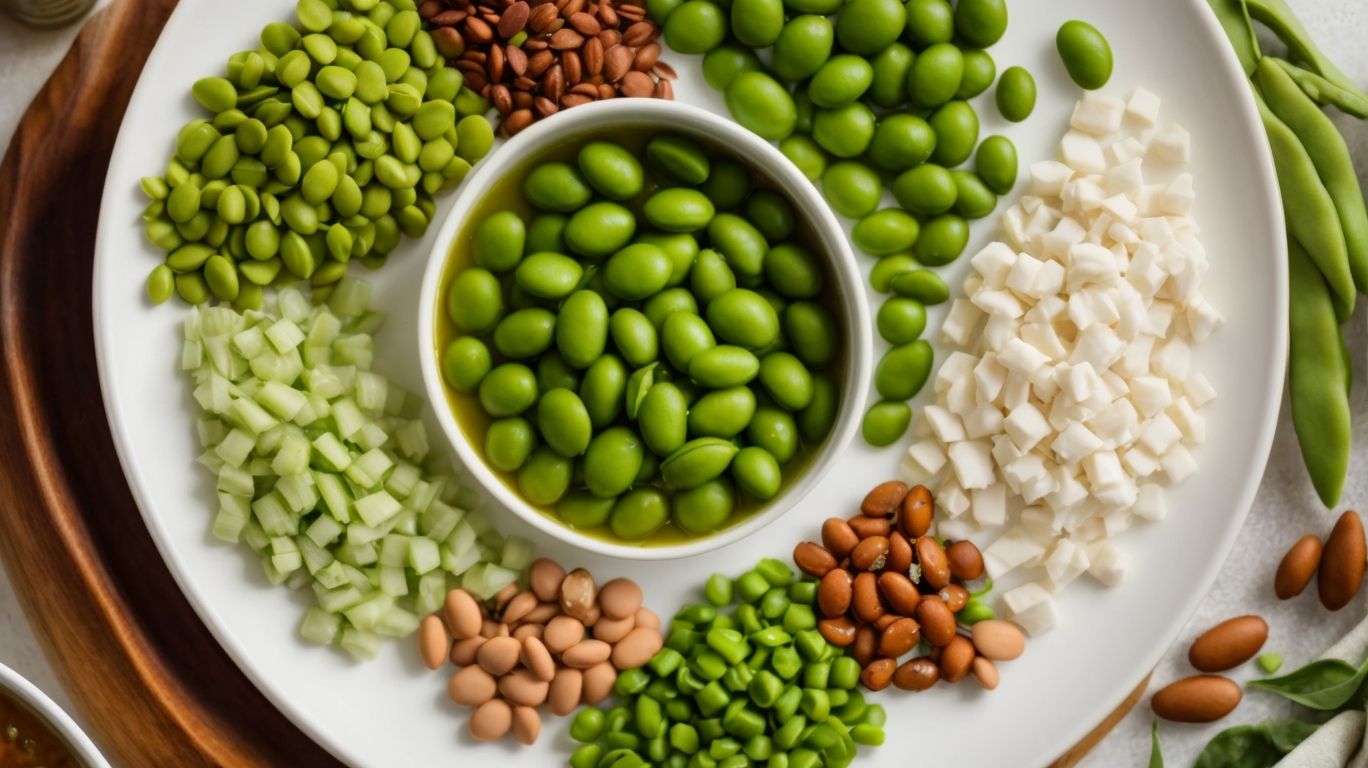
Credits: Poormet.Com – Dennis Mitchell
There are various methods to cook edamame without the shell, each offering unique textures and flavors to this nutritious legume. From boiling and steaming to microwaving and roasting, the cooking options are versatile and adaptable to different preferences.
One popular method is to sauté edamame in a pan with a drizzle of sesame oil and minced garlic, enhancing its natural taste with a hint of nuttiness and aroma. This quick and easy 5-minute recipe results in a savory and tender side dish that complements various main courses deliciously. Alternatively, you can toss the edamame with a sprinkle of salt and pepper, then roast them in the oven until they develop a crispy exterior, ideal for a crunchy snack or appetizer.
Boiling Edamame
Boiling edamame is a quick and simple method that retains the natural flavors and nutrients of the soybeans. It only takes a few minutes to cook edamame in boiling water until they are tender yet still slightly crisp.
For perfect edamame, ensure the water reaches a rolling boil before adding the soybeans. This ensures even cooking and preserves the vibrant green color of the pods. Typically, edamame require about 5-7 minutes of boiling, but check them periodically for desired texture.
To enhance the flavor, consider adding a pinch of salt to the water or incorporating soy sauce and garlic in the final seasoning. These additions impart a savory umami richness to the edamame, elevating them from a simple snack to a culinary delight.
Steaming Edamame
Steaming edamame is a gentle cooking method that preserves the nutrients and natural sweetness of the soybeans. Steamed edamame makes a delicious and nutritious snack or side dish.
When you steam edamame, you are essentially locking in its healthful properties. The gentle steam helps to retain the vibrant green color, crunchiness, and nutty flavor of the soybeans without compromising their nutritional value. This method of cooking ensures that edamame stays healthy and plant-based while enhancing its overall taste profile.
Microwaving Edamame
Microwaving edamame is a convenient and time-saving way to cook these delicious soybeans. With just a few minutes in the microwave, you can enjoy a quick and healthy snack or side dish.
When you have frozen edamame on hand, simply place the desired amount in a microwave-safe bowl. Add a splash of water to create steam and cover the bowl with a microwave-safe lid or plastic wrap. Microwave on high for about 2-3 minutes, depending on the wattage of your microwave. Once done, carefully remove the bowl as it will be hot. Season the edamame with a sprinkle of sea salt or soy sauce for extra flavor. This method helps retain the nutrients and vibrant green color of the edamame, making it not only easy but also nutritious.
Roasting Edamame
Roasting edamame in the oven or skillet can elevate the flavors and textures of these soybeans, creating a crunchy and satisfying snack or side dish. The roasting process adds a delightful depth of flavor to the edamame.
There are a few simple steps to achieve perfectly roasted edamame:
- First, preheat your oven to 400°F (200°C) or heat a skillet over medium heat.
- Next, toss the edamame with a drizzle of toasted sesame oil and your choice of seasonings such as garlic powder, smoked paprika, or sea salt.
- Spread the seasoned edamame in a single layer on a baking sheet or skillet.
Cooking times vary depending on the method chosen. Roast in the oven for 15-20 minutes, stirring halfway through, until the edamame is slightly golden and crisp. If using a skillet, cook for 8-10 minutes, stirring frequently.
For flavor variations, consider adding a sprinkle of soy sauce or a squeeze of fresh lemon juice after roasting. The umami-rich toasted sesame oil complements the nuttiness of the edamame, creating a mouthwatering combination that is perfect for snacking or serving as a nutritious side dish.
What Are Some Flavoring Options for Cooked Edamame?
There are numerous flavoring options to enhance the taste of cooked edamame, ranging from simple salt and pepper to more complex combinations like garlic and Parmesan or soy sauce and sesame seeds.
For those seeking a spicy kick, combining chili lime seasoning with edamame can provide a zesty twist that tantalizes the taste buds. The vibrant flavors of chili and tangy lime complement the natural nuttiness of edamame, creating a harmonious balance of heat and citrus.
Experimenting with furikake, a Japanese seasoning blend typically containing ingredients like seaweed, sesame seeds, and bonito flakes, can offer a unique umami-rich flavor profile to the edamame. This versatile legume lends itself well to various seasoning combinations, allowing for endless culinary creativity and delicious results.
Salt and Pepper
A classic and straightforward option, seasoning cooked edamame with salt and pepper enhances the natural flavors of the soybeans while providing a simple yet satisfying taste.
The delightful harmony between the saltiness from the salt and the subtle kick of pepper elevates the overall experience of enjoying edamame pods. This healthy snack becomes even more irresistible with this minimal yet impactful seasoning combo. The ease and speed with which these seasonings can be sprinkled over edamame make it a perfect choice for a quick, flavorful bite.
Garlic and Parmesan
The savory blend of garlic and Parmesan adds a rich and flavorful twist to cooked edamame, creating a delicious side dish or snack that is bursting with umami goodness.
Garlic brings a pungent, slightly spicy kick, while Parmesan offers a salty, nutty essence, combining harmoniously with the natural sweetness of the edamame pods.
This dynamic duo elevates the humble soybeans into a sophisticated and satisfying treat, perfect for serving as a healthy and flavorful appetizer.
Soy Sauce and Sesame Seeds
The umami-rich soy sauce paired with nutty sesame seeds creates a harmonious flavor profile when combined with cooked edamame, offering a delightful Asian-inspired twist to this versatile legume.
Edamame, young soybeans in their pods, are a popular snack or appetizer in many Asian cuisines, particularly in Japan. When prepared with soy sauce and sesame seeds, these humble beans take on a whole new level of depth and flavor. The soy sauce enhances the natural umami notes of the edamame while the sesame seeds add a crunchy texture and earthy richness.
The process is simple; in just a few minutes, you can have a bowl of perfectly seasoned edamame ready to enjoy. The nutty sesame seeds add a layer of complexity that balances out the salty tang of the soy sauce, creating a well-rounded taste sensation that’s both savory and satisfying.
Chili Lime
The spicy kick of chili combined with the zesty tang of lime adds a bold and refreshing flavor dimension to cooked edamame, creating a vibrant and tantalizing dish that is perfect for those who enjoy a bit of heat.
When you take a bite of these chili and lime-infused edamame pods, you are greeted with a burst of contrasting flavors that dance on your taste buds. The spicy chili provides a gradual build-up of warmth, while the citrusy lime offers a tangy and invigorating twist, resulting in an explosion of taste sensations.
This combination not only excites the palate but also awakens the senses, making it a delightful treat for those seeking a flavorsome experience. This dish is not only delicious but also healthy and vegetarian, making it a guilt-free indulgence that satisfies both your cravings and your dietary preferences.
How to Store Cooked Edamame Without Shell?
To store cooked edamame without the shell, ensure they are completely cooled before transferring them to an airtight container. Refrigerate the cooked soybeans for up to a few days to maintain freshness and flavor.
It is essential to place the container of cooked edamame in the fridge at a temperature below 40°F (4°C) to slow down bacterial growth and preserve their quality. Opt for a glass or plastic container with a secure lid to prevent any odors from other foods affecting the edamame.
Properly stored cooked edamame can stay fresh for around 3 to 4 days. Maintaining the right storage conditions ensures that the peas retain their crispness and flavor for longer periods. Always be sure to check for any signs of spoilage before consuming.
What Are Some Recipe Ideas Using Cooked Edamame Without Shell?
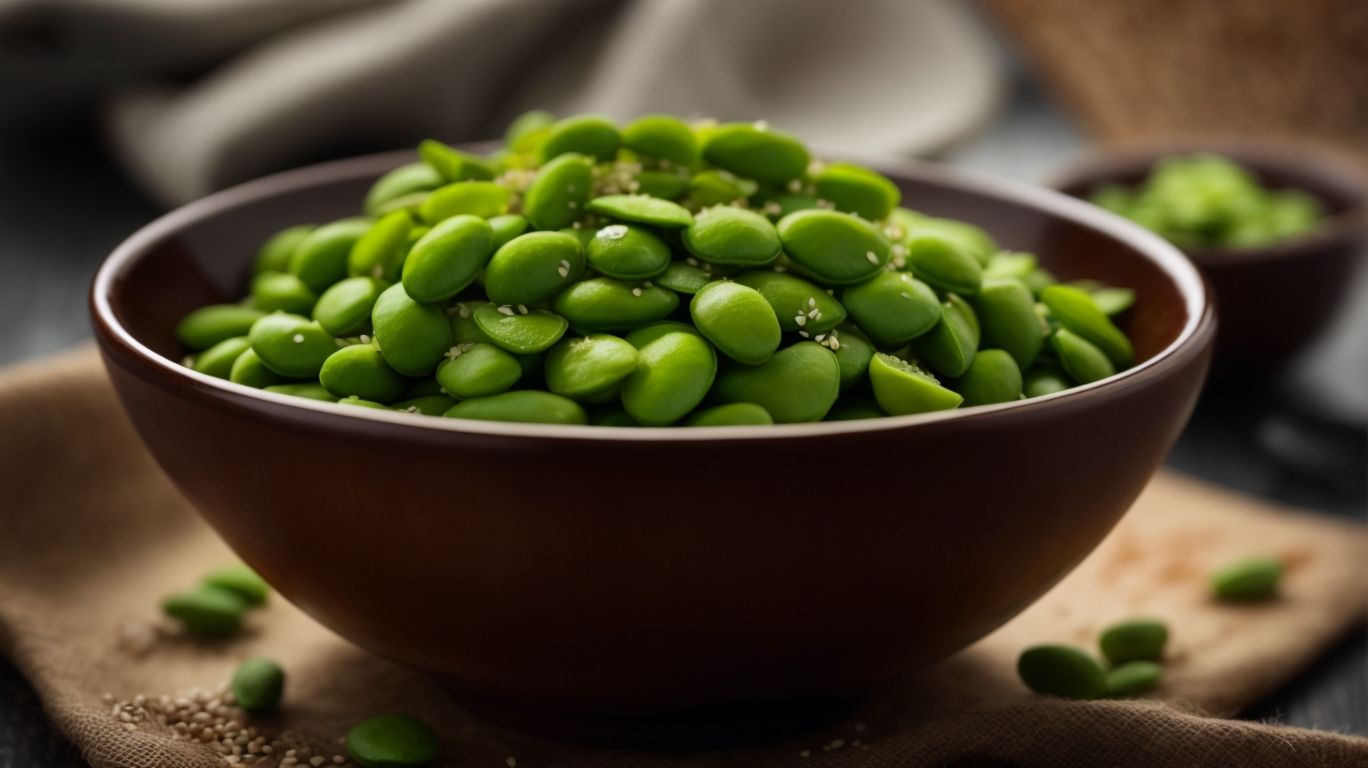
Credits: Poormet.Com – Carl Nelson
Cooked edamame without the shell can be used in a variety of delicious recipes that showcase its versatility and nutritional benefits.
For a refreshing and vibrant side dish, consider making a sesame oil kale salad with cooked edamame adding a lovely texture. The nuttiness of sesame oil complements the earthy flavor of kale, while the edamame brings a protein-packed element to the dish. You can experiment with edamame stir-fries, adding colorful bell peppers and a savory soy sauce glaze for a satisfying meal full of flavors and textures. The possibilities are truly endless when it comes to including cooked edamame in your cooking repertoire!
Edamame Hummus
Edamame hummus is a flavorful twist on the traditional chickpea-based spread, incorporating the creamy texture of edamame with the classic flavors of garlic, lemon, and tahini for a delicious dip or sandwich filling.
This plant-based hummus offers a nutritious alternative to traditional spreads, packed with protein and fiber from the edamame beans.
To prepare this delectable recipe, start by combining cooked edamame beans, tahini, garlic, fresh lemon juice, cumin, olive oil, and a pinch of salt in a food processor. Blend until smooth and creamy, adjusting the seasoning to your taste. Serve the edamame hummus garnished with a drizzle of olive oil, a sprinkle of paprika, and a handful of fresh herbs for added freshness.
Edamame Fried Rice
Edamame fried rice is a wholesome and satisfying dish that combines the nutty flavors of edamame with aromatic rice, vegetables, and seasonings. This colorful and nutritious meal is a great way to enjoy leftover rice and elevate your dining experience.
Begin by heating a tablespoon of vegetable oil in a large skillet or wok over medium-high heat.
Add finely chopped garlic and stir until fragrant, then toss in a variety of diced vegetables like bell peppers, carrots, and mushrooms for added texture.
Once the vegetables are tender, push them to the side of the pan and crack in two eggs, scrambling them until cooked through.
Next, toss in the cooked rice, followed by a generous splash of soy sauce to infuse the dish with savory umami goodness.
Edamame and Avocado Salad
The vibrant combination of edamame and avocado in a fresh salad creates a nutrient-rich and satisfying meal that is bursting with color and flavor. This salad is a perfect balance of creamy and crunchy textures that will delight your taste buds.
Edamame, also known as young soybeans, adds a punch of plant-based protein and fiber to this salad, while avocado brings in healthy fats, vitamins, and minerals.
The gentle drizzle of high-quality olive oil ties in all the flavors, enhancing the natural richness of the avocado and adding a subtle earthy note.
To add a dose of vibrant greens, toss in some fresh spinach leaves, which provide a refreshing contrast to the creaminess of the avocado and the crunchiness of the edamame.
Edamame and Tofu Stir Fry
The marriage of edamame and tofu in a flavorful stir fry dish results in a protein-packed and satisfying meal that is rich in umami flavors and wholesome ingredients. This stir fry is a quick and easy option for a nutritious weeknight dinner.
When preparing this delectable stir fry, start by heating a wok or large skillet over medium-high heat and add a drizzle of sesame oil to infuse that nutty flavor into the dish. Once the oil is shimmering, toss in the tofu cubes and edamame pods, allowing them to develop a nice golden crust for that satisfying texture.
To enhance the overall taste, consider adding fresh asparagus spears or bell pepper strips for a pop of color and additional nutrients. Experiment with seasonings like soy sauce, ginger, and garlic to create a robust umami profile that complements the tofu and edamame perfectly.
This dish not only delights the taste buds but also packs a nutritional punch, delivering essential plant-based proteins and fiber from the edamame, making it a well-rounded meal option for those looking to incorporate more vegetarian options into their diet.
Frequently Asked Questions
How to Cook Edamame Without Shell?
Question: What is Edamame?
Edamame is a type of soybean that is commonly used in Japanese and East Asian cuisine. It is often served as a snack or appetizer and is known for its high protein and nutritional value.
How to Cook Edamame Without Shell?
Question: Do I need to thaw frozen edamame before cooking?
It is not necessary to thaw frozen edamame before cooking. Simply rinse them under cold water and they are ready to be cooked.
How to Cook Edamame Without Shell?
Question: What is the best way to cook edamame without shell?
The most common and easy way to cook edamame without shell is by boiling them in salted water for about 5-7 minutes. You can also steam them for a healthier option.
How to Cook Edamame Without Shell?
Question: Can I cook edamame without shell in the microwave?
Yes, you can cook edamame without shell in the microwave. Place them in a microwave-safe dish, add a little water, cover and microwave for 2-3 minutes.
How to Cook Edamame Without Shell?
Question: Can I eat edamame without cooking?
While edamame can be eaten raw, it is not recommended as it may contain harmful bacteria. It is best to cook edamame before consuming it.
How to Cook Edamame Without Shell?
Question: Are there any other ways to cook edamame without shell?
Yes, you can also roast edamame in the oven, sauté them in a pan, or even grill them. Experiment with different cooking methods to find your favorite.

